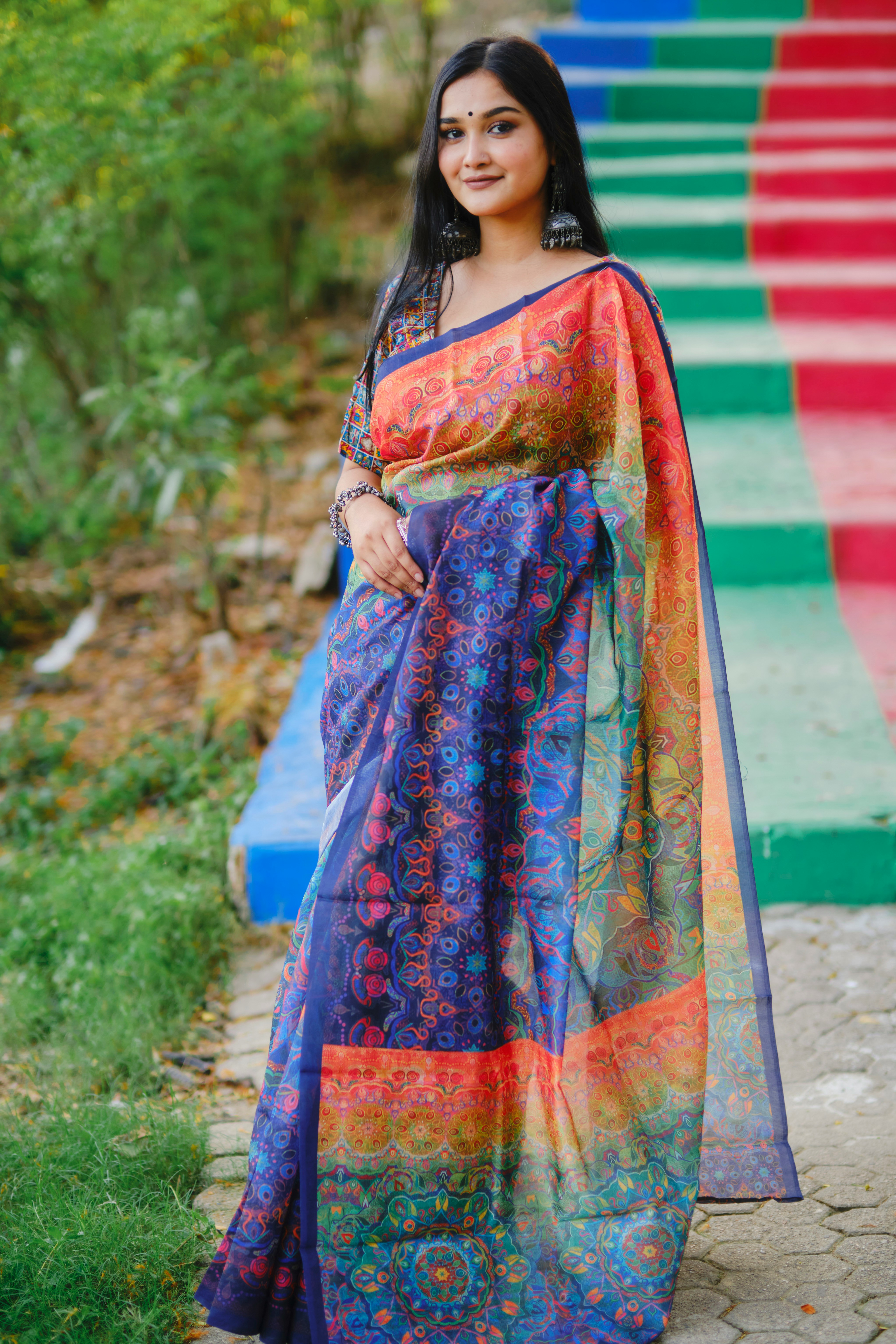
The saree is a traditional Indian dress that has become well-known throughout the world. Women love wearing it because a saree would elegantly and stylishly conceal their bodies. It is now used as a bridal dress because of its beauty and uniqueness.
Women of all classes—from the wealthiest rulers to those from the most modest homes—wear a variety of silk sarees to all occasions and festivals.
One very important type of saree, the iconic Kanjivaram Silk Saree, is a must-have for any Indian woman’s wardrobe or bridal trousseau. The Weaver Story kanjivaram saree is influenced by the grace of our handcrafted tradition and chosen with a contemporary eye to fit the modern Indian woman.
The Kanjivaram, also known as the “queen of silks,” is a popular dress choice for special occasions that are often momentous and life-altering, situations that serve as indicators of change and growth, as well as the beginning of a new chapter in a human’s life and journey. Kanjivaram silk sarees from the south of India are distinguished by their elegance, grace, classiness, style, exquisiteness, sophistication, tradition, and a variety of other words. This six-yard saree is a popular garment in India.
The history of the Kanjivaram silk saree can be traced back to early Hindu mythology. The Kanjivaram Silk Weavers are said to be descended from the Markanda Silk Weavers, who were reputed to have woven garments for the Gods themselves. They were God’s weavers, weaving silk out of lotus tissue fiber. This silk material is said to be a favorite of Lord Vishnu and Lord Shiva. This magnificent weaving has a history that dates back more than 400 years. During Krishna Devaraya’s reign, the two main weaving tribes, the Devangas, and the Saligars are said to have relocated from Andhra Pradesh and settled in Kanchipuram. Kanjivaram, from Tamil Nadu, is also known as Kanchipuram and Conjeevaram.
They began weaving beautiful designs of the figures they saw in the temples that surrounded the town on the entrancing Kanjivaram silk sarees.
The Pallavas constructed a city with a thousand temples that are famous for their magnificent architecture. The amount of art in temples and other structures will astound you. Kanjivaram has been woven with environmental sensations in mind. The British translated Kanchipuram silks to Conjeevaram silks, which became known as Kanjeevarum silks. This silk saree is created by weaving different designs from the finest mulberry silk strands.
Soon after, this lovely cloth rose to prominence and became an essential component of the saree.
Kanjivaram sarees are known for their opulence and are frequently passed down from generation to generation as heirlooms. These sarees are treated as if they were priceless jewels and diamonds. Kanjivaram sarees make Indian women look like goddesses, so they would never refuse one! However, caring for such sarees so that they remain beautiful and long-lasting requires a great deal of attention to detail.
Kanjivaram sarees originated in South India, but they are now popular throughout the country. They are so good and beautiful that their prices vary greatly depending on the complexity of the work, the colors, the design, the quality of the silk and zari, and so on. For a variety of formal and informal occasions, brides-to-be and other married ladies of the home typically dress in gleaming Kanjivaram sarees. When accessorized with the appropriate jewelry, a kanjivaram silk saree exudes an unrivaled air of sophistication. A kanjivaram saree must be included in a bride’s bridal trousseau.
FAQs
- How are Kanjivaram sarees produced?
Kanjivaram saris are famous for their rich gold borders and dense brocades in contrasting colors. They are entirely handwoven from dyed silk yarn and zari (silk thread made of silver and gold). Sarees are renowned for their richness, texture, brightness, durability, and finish.
- How do you recognize a Kanjivaram saree?
When purchasing Kanchi pattu sarees, look for the hallmark sign on the saree. The Silk Mark Organization of India oversees establishing quality standards and certifying genuine silk sarees. So, if the sign is on the sarees, you know you are getting a genuine one.
- How many kinds of Kanjivaram sarees are there?
Kanchipuram silks are classified into three types: pure silk and pure zari, pure silk and textile/half-fine/tested zari, and polyester/silk mix and pure zari.
- In which state kanjivaram saree is famous?
Kanjeevaram is derived from Kanchipuram, a small town or village in the Indian state of Tamil Nadu, where the saree is thought to have originated.
- Is it possible to wash a Kanjivaram saree?
If you must wash your kanjivaram saree at home, use cold water and a small amount of shampoo only after the first three washes. Harsh detergents and brushes will be extremely damaging to your prized saree! To avoid damage to your sari, wash the sari, pallu, and border separately.





